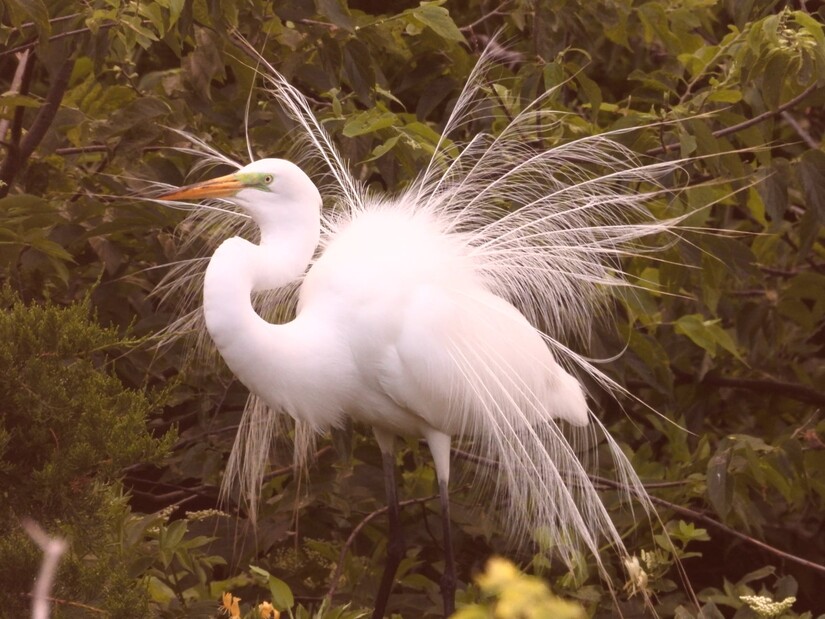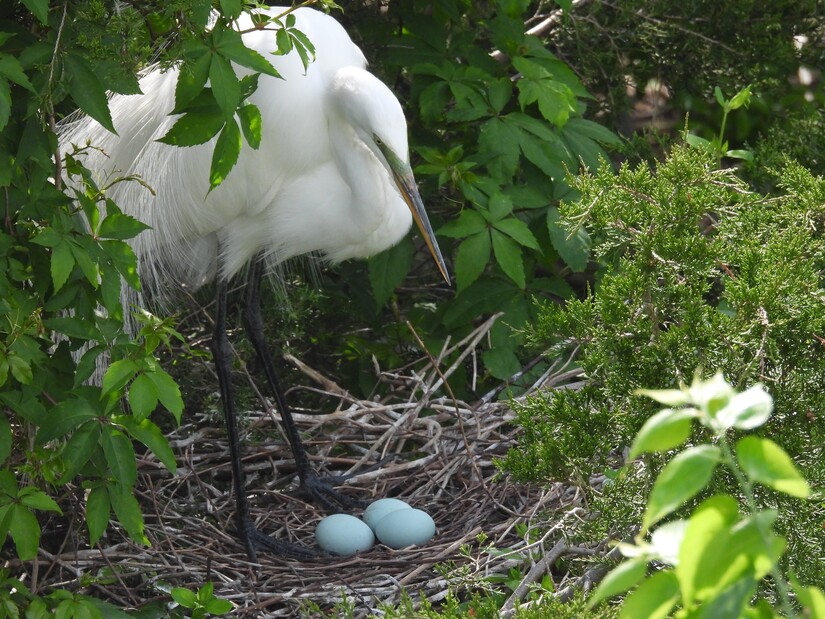Image


by Mike Strzelecki*
Ocean City (New Jersey) Visitor Center Rookery
Boyertown has its fair share of birding hot spots, like the community park and plots of woodland along the Manatawny Creek. One of the most popular and productive birding hot spots in the mid-Atlantic region is not near Boyertown, but may be of interest to Boyertown residents. The Ocean City (New Jersey) bird rookery is a world-class bird observation area and is located right on the road that many Boyertownians take on their spring and summer pilgrimages to the Ocean City beach resort. A stop-off on your next beach journey may be warranted.
The exact location of the rookery is at the Ocean City Welcome and Information Center, located on the Stainton Memorial Causeway (or the Ninth Street Bridge, as old-schoolers call it). You can only access the rookery by traveling east across the bridge, from Somers Point to Ocean City. You pull in just beyond the visitor center and the roadway will swing you behind the building to the rookery, where there is usually ample parking.

Rookeries are places where birds breed in clusters, mostly as a means of protection against predators. A rookery could contain anywhere from a handful of nests to a concentration of hundreds. The Ocean City rookery is one of the largest in the region with the number of nests probably hitting three digits. It is situated in a grove of shrubs and trees rising on an island in Great Egg Harbor Bay.
The rookery’s abundant size is certainly an appeal to birders, but the Ocean City rookery has an attribute that makes it even more popular, and attracts bird watchers from around the country. Most rookeries are located high in the canopy of trees. Birders on the ground can usually only see the nest bottoms and maybe the head of an adult peaking out, but viewing is fairly limited. At the Ocean City rookery, the observer is situated on an elevated road above the rookery and can actually peer down into many of the nests. You have special VIP access to watching mothers and fathers build nests and incubate eggs. You can view eggs hatching (if your timing is right) and watch mothers feeding and grooming their young.
Another factor that makes the Ocean City rookery so appealing is the diversity of species that breed there. Most rookeries may be limited to a single species of bird, or perhaps a couple of species. At the Ocean City rookery, there are at least seven different species breeding there and the number of individual birds using the rookery at any one time often pushes well into the hundreds.
The breeding species of birds I have seen in my many visits to the Ocean City rookery include great egrets, snowy egrets, little blue herons, white ibises, glossy ibises, black-crowned night herons, and yellow-crowned night herons.

The different species of birds using the rookery often have different breeding timelines. But as a general rule, breeding activities at the rookery usually begin in March when the first wave of birds begin building new nests or repairing existing nests, and extend through late June or even into early July. If you decide to drop by, remember your binoculars and camera.
Here are images I have taken from the rookery over the past few years, highlighting some of the colorful resident birds. The little blue heron is smaller in stature than its more prevalent cousin, the great blue heron, and sports a nifty fluorescent blue bill.

The great egret is the larger of the two egret species that calls the rookery home, and the most demonstrative with its plumage.

The snowy egret is smaller than the great egret, and features a black bill instead of a yellow one.

The white ibis is a newer visitor to the rookery, first appearing in 2020. It now numbers in the hundreds.

The glossy ibis is identifiable by its shiny, rusty-brown coat that flashes brighter colors in sunlight.

The yellow-crowned night heron and black-crowned night heron are not as prolific at the rookery as the egrets and ibises, but can usually be seen nesting closer to the ground throughout the entire rookery.


Eggs are laid at different intervals throughout the spring and can be seen from the observation area.

When the various babies hatch at the rookery, you will be reminded that your worst “bad hair days” are not as bad as theirs.




Perhaps the funnest time to visit the rookery is early June. Parents are particularly active, flying in and out of the rookery in search of food for the chicks. And the chicks are tending towards adulthood and become aggressive with their need for both food and mom’s attention.



The avian fun usually continues through late June or early July, at which point the youngsters fledge (leave the nest) and become independent, providing the rookery some peace and quiet until the next breeding season.
* Mike Strzelecki is a freelance travel and outdoor writer, and 1981 graduate of Boyertown Area Senior High School. He writes from his house in Baltimore, Maryland. In his spare time, he joins his wife on adventures around the country observing and photographing birds.